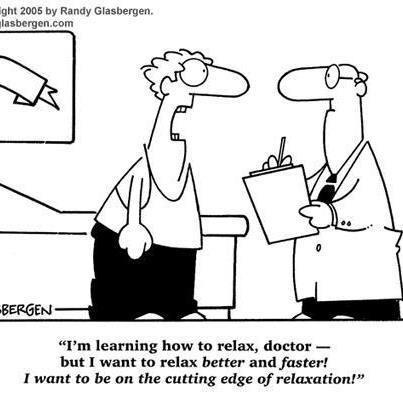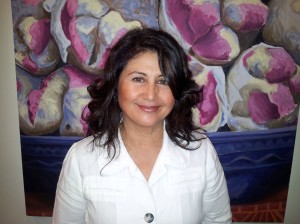10 Most Popular Types of Massage
Here is a quick guide to the most popular types of massage therapy.
What’s the difference between all these types of Massages?
When you want to choose a massage but don’t know what is the right one for you – the best answer is to choose the one that best fits your need at the time. Do you need a massage for relaxation and stress relief, or for treating pain and specific issues or for overall health and rejuvenation.

1. Swedish Relaxation Massage
Swedish Massage is a system of long strokes, kneading, friction, tapping, percussion, vibration and shaking motions that apply pressure between muscles and bones, rubbing in the same direction as the flow of blood returning to the heart. Swedish Massage feels good, is relaxing and invigorating.
The main purpose of Swedish Massage is to increase the oxygen flow in the blood and release toxins from the muscles. Some other benefits include shortening recovery time from muscular strain, increased circulation without increased heart load, stretching of ligaments and tendons, skin stimulation and soothing of the nervous system. It reduces stress, both emotional and physical, and is suggested as part of a regular program for stress management.
The sequence of techniques usually used in a session of Swedish Massage are:
1.Effleurage: gliding strokes with the palms, thumbs and/or fingertips.
2.Petrissage: kneading movements with the hands, thumbs and/or fingertips.
3.Friction: circular pressures with the palms of hands, thumbs and/or fingertips.
4.Vibration: oscillatory movements that shake or vibrate the body.
5.Percussion: brisk hacking or tapping.
6.Passive and Active Movements: bending and stretching.
The patient is required to be appropriately unclothed for the treatments, which would usually be for an hour, although longer or shorter treatments are also possible.
If you’ve never had a massage before, this is a good one to start with.
2. Aromatherapy and Aromatherapy Massage
Aromatherapy has been around for some 6000 years and involves the use of pure essential oils (fragrant plant extracts), usually through massage, inhalation, baths or compresses. In an aromatherapy massage, individual blends are prepared by the practitioner, in a base of cold pressed oil and then applied to the patient’s skin through a remedial or relaxing massage. It is important that they are not used directly on the skin, as burning or rashes could occur.
As a holistic treatment, aromatherapy can have a profound effect on physical and psychological wellbeing. There exists the belief that scent, as the most enduring of our senses, has the power to transform our emotions, and heal our bodies.
Essential Oils
The Essential Oils used in aromatherapy are extracted from plants and herbs to treat conditions ranging from infections and skin disorders to immune deficiencies and stress. When aromas are detected in the nasal cavity, impressions associated with previous experiences and emotions are created. Combining this with the fact that the parts of the brain that control heart rate, blood pressure, breathing, memory, stress levels and hormone balance are also related to the nasal cavity, it is evident that the use of essential oils contributes to and achieves many physiological or psychological effects.
Some common oils and their uses include:
- Eucalyptus: for congestion/colds
- Frankincense: for calming emotions and nightmares
- Geranium:for menopausal problems & PMS Lemongrass; for sore or injured muscles
- Lavender: for relaxation
- Peppermint: for quick energy
- Rose: a uterine tonic and aids in contractions during childbirth
- Sandalwood: for relaxation, digestive troubles (esp. due to tension), dry skin
- Tea Tree: a strong disinfectant, anti-bacterial, and anti-fungal
Benefits of Aromatherapy
Aromatherapy can have a wide range of benefits, from the physical to the emotional. The benefits of essential oils can be obtained through inhalation or by external application. Aromatherapy is often used in conjunction to mainstream medicine to help treat common colds and flu, insomnia, nausea, skin conditions, migraines and headaches and many other ailments. Aromatherapy is easy to practice, readily available, and can be effective as a therapy, but should be used with care.
Aromatherapy massage is particularly suited to stress-related conditions or conditions with an emotional component and the pressure is light to medium.
Massages for Overall Health and Rejuvenation
While a Remedial massage and any of the firmer variations above should all leave you feeling free from pain, some specific types of massages may be better for an overall energy boost.
Shiatsu and Thai Massage are both interactive treatments rather like a Yoga in action but with the therapist doing it for you – very relaxing and stretching by warming up your body first and taking it to the next level of stretch.
A scientific explanation is that shiatsu calms an overactive sympathetic nervous system, which improves circulation, relieves stiff muscles, and alleviates stress.
Best for: Improving energy, increased flexibility, overall health and well-being
Massages for Treating Pain and Specific Conditions
When you have knotted muscles or have more specific ailments, more attentive techniques are required, such as Remedial Massage, Gua Sha and Myofascial Release.
When muscles and tendons become damaged or impaired, knotted and tense or immobile, Remedial Massage provides a therapeutic and healing treatment that can be gentle or strong, deep or lighter. Remedial massage holistically treats the whole body and traces the discomfort as far as possible back to the original cause, healing both the cause of the disorder as well as the symptoms. Sports Massage and Deep Tissue Massage are variations of Remedial Massage with Remedial Massage being more holistic in its overall approach. Other techniques can be used to assist with relieving pain and assisting recovery such as Gua Sha and Myofascial release.
3. Hot Stone Massage
Heated, smooth stones are placed on certain points on the body to warm and loosen tight muscles and balance energy centers in the body.
The massage therapist may also hold stones and apply gentle pressure with them. The warmth is comforting. Hot stone massage is good for people who have muscle tension but prefer lighter massage.
Massage for Relaxation and Stress Relief
Some massages are more soothing than others, leaving you feeling like you’ve been wrapped in a cloud and the “reset” button pressed on your body.
The Healing Practice has Special Introductory Offers for First Time clients.
Click to check the current special price.
* New Clients Only
Please mention this offer when booking your treatment to get the discount.
4.Deep Tissue Massage
Deep Tissue Massage, as the name implies, focuses on the deeper layers of muscle tissue. It is designed to reach the deep sections of thick muscles, specifically the individual muscle fibres.
Using deep muscle compression and friction along the grain of the muscle, the purpose of Deep Tissue Massage is to unstick the fibres of the muscles and release both toxins and deeply held tension points. Specific hand positions and strokes are used to respond to various tissues while breath and movement techniques are employed to release muscular congestion. It helps to loosen muscle tissues, release toxins from muscles and get blood and oxygen circulating properly. It is both corrective and therapeutic. It is beneficial for many physical problems, including sports injuries and chronic pain. Because it works very deeply, emotional issues can also be addressed, when these have been stored in the body.
Treatments take place on a massage table on bare skin. Deep Tissue Massage usually focuses on specific areas and may cause some soreness during or after the session. If the massage is done correctly however, you should feel better within a day or two. Water helps to eliminate toxins from the body so it is important to drink plenty of water after a Deep Tissue Massage to help this process along.
This is a firm massage and more suited to those wanting a remedial type or sports massage.

Claire Cleaver specialises in massage, hypnotherapy and holistic counselling. She sees clients for various needs recognising that high levels of sustained stress can create long-term unwellness. It is important to seek the right treatment at the right time.
Find out how we can help you schedule introductory phone call
Health Fund rebates are available depending on your level of cover. Process your HICAPS claim on the spot and we accept payment by cash, eftpos, credit card and online transfers.
Gift Certificates are also available
Comments check out what our other clients say!
5. Shiatsu
Shiatsu is a traditional hands-on Japanese healing therapy that has been formulated over the last 100 years from the traditional Japanese amma massage which is a feel good, therapeutic massage. Shiatsu literally means finger-pressure and as such describes part of the therapy whereby natural body weight (finger, thumbs, elbows, forearms, feet and knees) is used in applying pressure to special points on the body. This is combined with stretches, joint rotations and joint manipulation to give an all-over treatment, which aims at treating the patient on a holistic level.
The aim of a Shiatsu Practitioner is to rebalance the flow of energy (Ki), along the meridians or channels. The surface touch uses points on the surface known as Tsubo to access those meridians. The practitioner feels for excessive (Jitsu) or deficient (Kyo) energy (Ki) within the meridians as they control the movement in the body (blood, gas, air, water).
Shiatsu incorporates pressure, holding, rubbing, heating or stretching techniques which can be deep and firm, but which are applied with sensitivity.
Shiatsu is a deeply relaxing experience and regular Shiatsu sessions help to prevent the build up of stress. Common conditions helped by Shiatsu include: back pain, headaches, whiplash and neck stiffness, joint pain and reduced mobility, menstrual problems, digestive problems, asthmatic symptoms, sports injuries, depression and stress. In some cases, patients responding to Shiatsu may also benefit from Acupuncture.
It begins with the practitioner assessing pulses, tongue, face, hara (abdomen area) and spinal column examinations to ascertain what treatments to use. Treatment is carried out fully clothed or with a kimono-gown on, usually with the patient lying or sitting on a futon mat on the ground, although it can be adapted to a massage table. A typical session will last about an hour. No oil is used in this treatment.
People are normally pleasantly surprised when they try shiatsu for the first time. It is relaxing yet the pressure is firm, and there is usually no soreness afterward.
The Healing Practice
7 Albert St
Forest Lodge (Glebe)
NSW 2037.
By appointment only.
The Healing Practice
The Healing Practice
129b Balmain Rd
Leichhardt, Sydney NSW 2040
M: 0438 216 351
